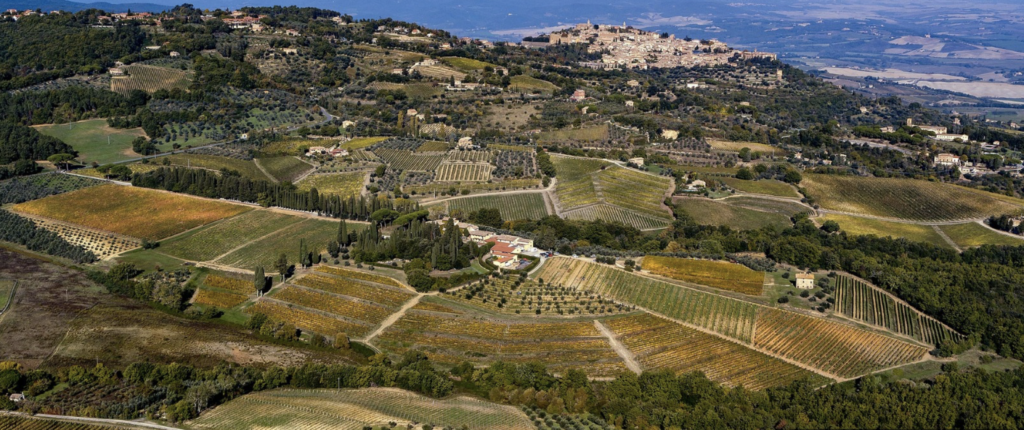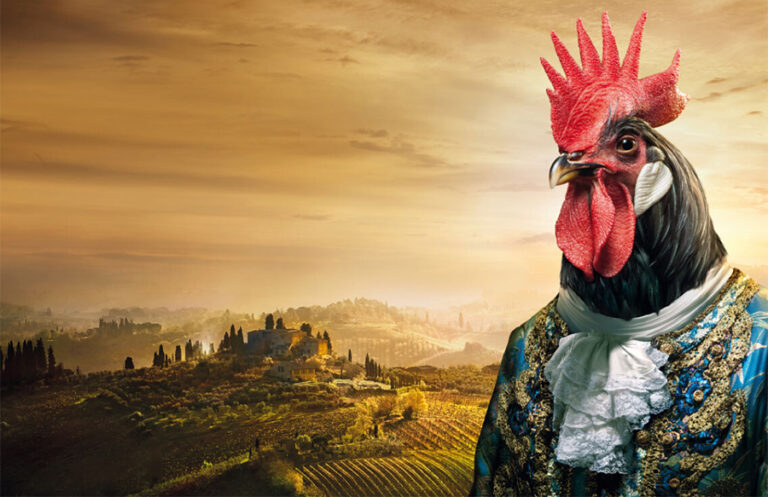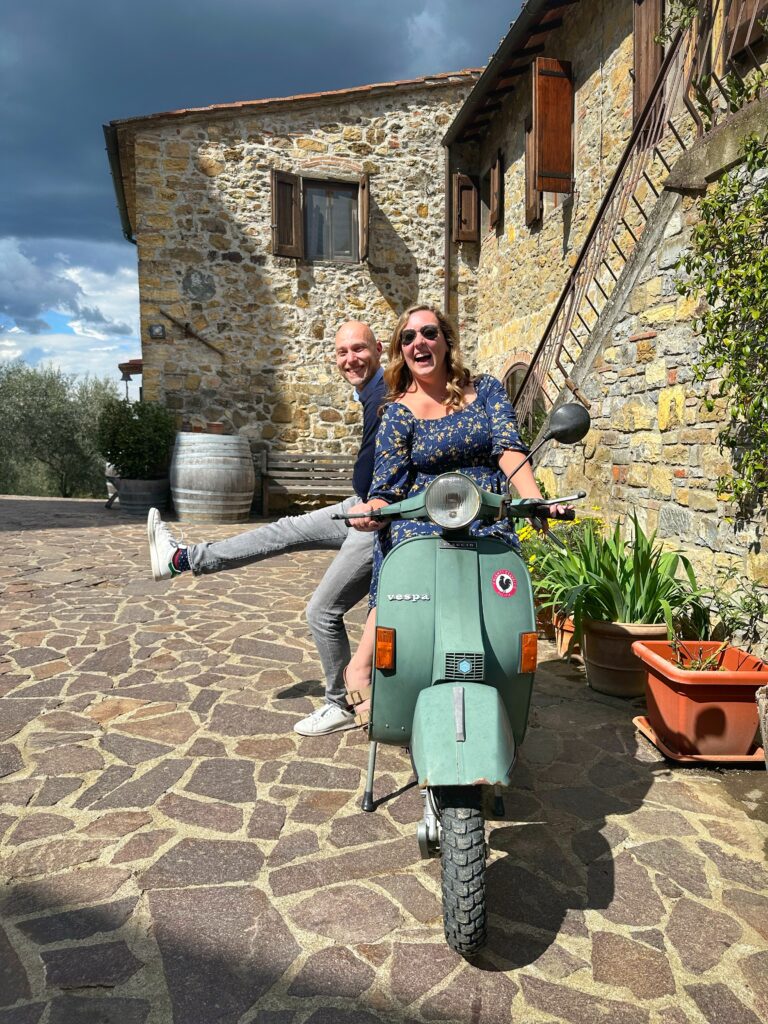If there’s one wine that tells a fascinating story of dedication, innovation, and love for the land, it’s undoubtedly Brunello di Montalcino.
Its origins are tied to an extraordinary family, Biondi Santi, whose dedication transformed a small Tuscan village into one of the world’s wine capitals. With this article, together with Tuscany Uncorked Wine Tours, we invite you to discover where it all began.
The Roots of a Legend: The Biondi Santi Family
The Biondi Santi family has lived in Montalcino for generations, and more than anyone else, they helped put this corner of Tuscany on the world wine map. It all began in the 18th century, when Tullio Canali built the family residence within his estate, Il Greppo. But it was his grandson, Clemente Santi, who gave the first real push to what would become the legendary story of Brunello.
Clemente, a pharmacy graduate and well-known nature writer, developed a deep passion for viticulture and approached winemaking with a scientific and innovative mindset. His academic background in chemistry and biology made him a skilled and forward-thinking winemaker. His wines earned prestigious awards and were even showcased at the 1867 Paris World’s Fair. His rigorous methods and relentless pursuit of perfection marked the first signs of the wine revolution that was about to unfold.
The Birth of a Legend: Ferruccio Biondi Santi and the Sangiovese Revolution
Clemente’s daughter, Caterina, married Jacopo Biondi. Their son, Ferruccio, inherited his maternal grandfather’s passion for winemaking and chose to carry on his legacy—thus becoming the first to bear the name Biondi Santi.
Ferruccio is considered the true father of Brunello di Montalcino. After the devastation caused by phylloxera, he carefully selected the hardiest Sangiovese clones and grafted them onto American rootstock. He didn’t know it at the time, but he was writing a new chapter in the history of Italian wine.
He began vinifying Sangiovese in purezza—as a single-varietal wine—creating a powerful, elegant expression capable of aging for decades. This revolutionary choice would forever change the destiny of Montalcino.

War, Love, and Brilliant Insights: The Story of Tancredi Biondi Santi
During World War I, Ferruccio’s son, Tancredi, was called to the front, wounded in battle, and hospitalized in Florence, where he met a nurse named Anna Tomada. Their love story brought them back to Montalcino, to Villa Greppo, where they married and began a new chapter in the family’s legacy.
There was much work to be done—the vineyards, neglected for years due to the war, needed major restoration. Tancredi, who held a degree in agriculture and a diploma in oenology—following what had by then become a family tradition—also inherited his father’s deep passion for winemaking. Ferruccio had passed away in 1917.
In 1922, he decided to take full control of the estate by purchasing his brother Gontrano’s share. The two agreed, however, to divide equally the precious bottles of Brunello that Ferruccio had stored in the cellar.
While Gontrano quickly squandered his inheritance, Tancredi recognized the extraordinary potential of Brunello and preserved his bottles with great care. With remarkable foresight, he understood that these wines were a vital testament to the quality of a wine seemingly untouched by the passage of time.
But the years between the two World Wars were tough: Montalcino was a poor village, and the demand for quality wine was almost nonexistent. With remarkable vision, Tancredi decided to found the Cantina Sociale Biondi Santi & Co., offering his own cellar—located in the heart of town—to local wine producers.
This initiative was not only an act of generosity, but also a powerful sign of his commitment to the community and to the growth of the region.
Franco Biondi Santi and World War II: A Family Epic
Tancredi passed on to his son Franco the same deep love for the land and for wine. After earning a diploma in oenology, Franco enrolled in the Faculty of Agriculture at the University of Florence, but the war soon interrupted his studies.
In 1943, he was drafted and sent to the French border. After the Armistice of September 8, the Italian army fell into chaos. Franco held his position for a few more days, but when he realized that he and his fellow soldiers had been completely abandoned by their superiors, he decided to make his way back home.
He managed to return to Il Greppo after a daring journey—hiding in freight trains, walking for miles, and narrowly escaping Nazi raids.
Reunited with his son, Tancredi knew that Italy was facing one of its darkest moments—and that everything they owned, including their precious collection of Brunello, could be looted by the Nazis at any time.
So he made a drastic decision: “They’ll either drink them or steal them,” he said. That night, father and son secretly bricked up their finest bottles, hiding them away to protect them from the raids.
This moment became a powerful symbol of the family’s deep, visceral bond with their wine—considered a treasure worth protecting at all costs.
These and many other fascinating stories—like the legendary 1888 bottle—can be discovered with Gabriele, your sommelier and Certified WSET Educator, who leads the Montalcino tour with Tuscany Uncorked.

Post-War Revival: How Brunello Captivated the World
In 1945, the harvest was exceptional, allowing Tancredi to produce the first Riserva in over twenty years. Within just a few years, Brunello Biondi Santi rose to international prominence, becoming a benchmark for high-quality winemaking in Italy.
In 1947, Franco met Maria Floria Petri, whom he married in 1949. Their first son, Jacopo, was born in 1950.
The 1950s marked a turning point: Brunello established itself as one of Italy’s most prestigious wines, and was soon regarded as the only Italian wine capable of competing with the great French Châteaux.
Until the 1950s, the Biondi Santi family was the only winery producing Brunello. Sangiovese is notoriously difficult to grow, and those who had tried before quickly gave up.
The family never thought to trademark the name, assuming no one else would venture down the same path—until it was too late.
Driven by the success of Biondi Santi, many others began making wine in Montalcino, and started calling it Brunello.
And so, in 1966, Brunello was officially granted DOC status, and it was naturally Tancredi who was called upon to write the production regulations. He ensured that strict rules were put in place to preserve the quality and authenticityof his beloved wine.
What makes this wine practically immortal is not only its inherent aging potential, but also the meticulous carededicated to each bottle.
As we know, cork gradually loses its elasticity over time, allowing air to seep in. For this reason, bottles are periodically topped up and re-corked. This practice was first introduced by Tancredi in 1927, when he noticed the wine level starting to drop.
A second re-corking took place in 1970, and the process has continued periodically ever since—using wine from the same vintage, even for bottles that have already been sold.
New Challenges: The Super Tuscans and the Defense of Tradition
In 1970, following Tancredi’s passing, the management of the estate officially passed to Franco, who continued to uphold the family’s traditional approach.
As the wine world evolved, the Super Tuscans emerged—modern wines aged in barriques and ready to drink much earlier. The first of these, Sassicaia, achieved overwhelming success, prompting many Tuscan producers to plant Cabernet Sauvignon and other French varieties.
Even in Montalcino, some began pushing to modernize Brunello—shortening aging times and experimenting with new types of wood. But Franco firmly resisted. To him, Brunello had to preserve its true identity: aging slowly in large Slavonian oak casks to develop its unmistakable complexity.
It was a battle between tradition and innovation, and Franco chose to proudly defend his family’s philosophy.
The 1994 Challenge: Proving Brunello’s Longevity
In 1994, determined to defend the value of his Brunello, Franco organized a historic vertical tasting, inviting some of the world’s most renowned wine critics. The tasting began with the 1988 vintage and went all the way back to the legendary 1888 crafted by his grandfather Ferruccio.
The result was a triumph: Brunello proved its extraordinary longevity and unmistakable identity.
A Timeless Wine
Thanks to the unwavering determination of the Biondi Santi family, Brunello di Montalcino has become an icon of Italian wine. It doesn’t follow trends, nor does it seek shortcuts—it’s a wine made to last, a testament to a passion passed down through generations.
If you want to learn more about this enological masterpiece, come visit Montalcino and join one of our tours. Every Wednesday, we’ll take you on a journey through the history and flavor of one of the world’s most fascinating wines.
Stay in Touch
📲 Follow us on Instagram and Facebook for more wine adventures, travel tips, and exclusive experiences!
See you in Tuscany! 🍷



